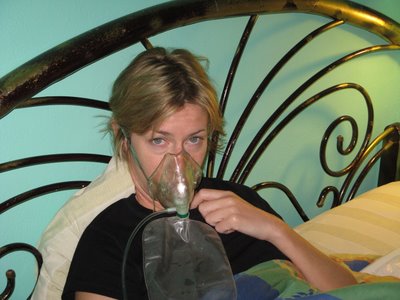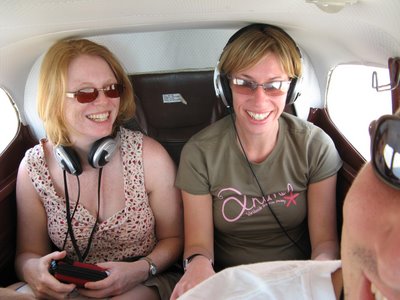Travelled a rough, rutted road to Colca Canyon. There was plenty to see on route, including 3 species of camelids, alpaca, llama and vicuna. Although protected in national parks, the camelids are still shaved of their fleece every year, which produces the world´s finest woolens. Adam purchased an alpaca wool hat during one of our rest stops, and although requesting, grande, grande, it is still a little on the snug side.

During our journey we reached a staggering altitude of 5,000 meters, hence our first introduction to coca, in various forms. Before our highest ascent, we stopped for a coca tea break, where we also encountered some naughty llamas and sheep that seem quite partial to a drop themselves. Coca has been used by the Peruvians for many centuries to give them energy at high altitude and it certainly does relieve the headache. Our tour guide also introduced us to the art of chewing coca, which had a revolting taste, but caused a pleasant numbing sensation. Also have tried coca in sweets and biscuits. Dont worry Mum, its all perfectly legal, here anyway!
Colca Canyon is stunning, flanked by inca and pre-inca argicultural terracing. This is still farmed today, by hand, ox and plough - not a tractor in sight. The small villages throughout the canyon uphold many traditions and depending on altitude grow a variety of crops, particularly onions! We stayed in a fantastic guest house with spectacular views and a pet alpaca called Manches (which tried to bite Adam´s feet and tip me out of the hammock). Took a breathless short hike, spotted condors, wallowed in thermal baths. During our last evening were treated to some traditional entertainment which required audience participation. This took the form of a few skips around the place, lying on the floor and having your bottom whipped. Most amusing until it was my turn!

Colca Canyon to Puno and Lake Titicaca - a most unpleasant and long journey due to altitude and choice of bad movies by Francisco. First views of Lake Titicaca were stunning. Visited the Yvari, the oldest ship on Lake Titicaca today. Although this sounds extremely dull, the story of the ship is very interesting. The ship was ordered from england in 1862, but needed to be packaged for transport by mule. The ship travelled in 2,600 pieces and took 6 years to reach Lake Titicaca, where it was assembled by ship builders from Liverpool.
Physical Update
Sadly both Adam and I have called on the assistance of the doctore. Adam, after three days of travelers tummy, is on antibiotics and boiled food for 5 days (much to his disgust). I was struck down by altitue sickness on arrival in Puno, and the was administered oxygen, an injection in the hip to cure a rash, paracetemol for temperature, blood pressure tablets and antibiotics for tummy troubles - all for the bargain price of $30. We are both feeling much better now and looking forward to yet another chicken soup for dinner.

Altitude sickness
Symptons can include fever, streaming nose and eyes, headache, nausea, upset stomach, loss of apetite. To avoid altitude sickness, stay at sea level. Symptoms can be relived by coca, or more effectively by hooking up to an oxygen tank. Think my ambitions of climbing Everest may be out of the window.
More facts about Peru:
The condor, national symbol and bird of Peru, is the world´s largest flying bird. Although elegant in flight, is a right ugly looking thing. http://news.nationalgeographic.com/news/2004/07/0722_040722_andeancondor.html
Colca Canyon is the world´s deepest canyon.
The Peruvians, pre Spanish colonisation, used head shaping to indentify tribes or status within tribes. Babies skulls were shaped by wooden boards, cloth and cot ends, to elongate or flatten. As the Spanish put an end to this charming practice, hats (still worn today by villagers) of different shapes serve the same purpose of indentification.
All Peruvians must vote, otherwise they are fined $40.
Llama tastes a bit like lamb.








